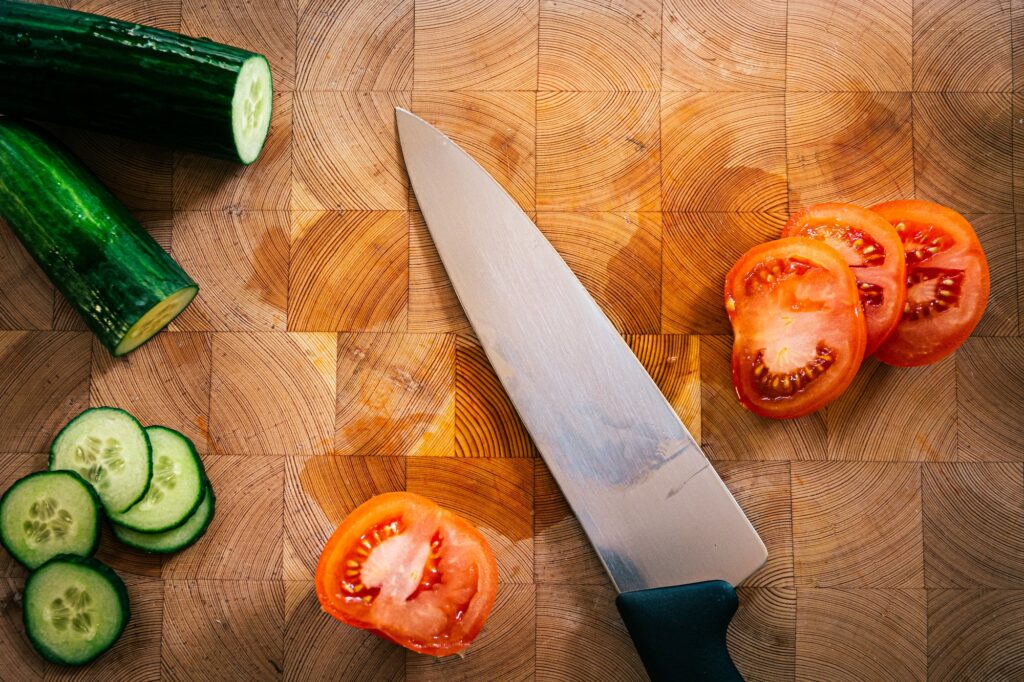In the realm of culinary arts, maintaining sanitation is absolutely crucial. A lack of proper cleanliness can lead to foodborne illnesses and serious cross-contamination issues. Many kitchen professionals frequently ponder, 'When should I clean and sanitize my knife and cutting board?' The quick answer? Almost more often than you realize. This guide aims to simplify the essential tasks of keeping your most-used kitchen toolsknives and cutting boardsin pristine condition.
When you're chopping vegetables, slicing through raw meats, or working tirelessly in a bustling commercial kitchen, strictly adhering to hygiene standards is vital. This not only preserves the integrity of the dishes you prepare but safeguards the health of your clients and the credibility of your establishment. Lets explore step-by-step how to keep these essential tools immaculate, safe, and ready for immediate use.

Essential Reasons for Cleaning and Sanitizing
The kitchen can be a breeding ground for dangerous bacteria. From Escherichia coli (E. coli) and Salmonella to various other pathogens, dirty utensils and surfaces create ideal conditions for these harmful microorganisms to flourish. Your knife and cutting board regularly encounter raw meats, fruits, and veggies, each bringing a unique set of potential contaminants.
Failure to properly clean your tools can lead to:
- Foodborne illness outbreaks
- Cross-contamination hazards
- Reduction in food quality
- Possible legal or health code violations
With these serious risks in mind, it's essential to know the appropriate frequency for cleaning and sanitizing these vital kitchen utensils.
Cleaning Frequency: Expectations and Best Practices
While general cleaning should be a routine throughout the day, the frequency of sanitization relies heavily on the types of food being prepared. Consider these specific scenarios:
- **Immediately after cutting raw meat:** Raw protein-rich meats and poultry necessitate prompt cleaning and sanitization due to the high risk of bacterial contamination.
- **After cutting fresh produce:** Even fresh vegetables can harbor bacteria, particularly if they haven't been thoroughly cleaned before slicing.
- **Between allergen-specific food preparations:** For example, if you prepare nuts after cutting a salad, this could trigger risky allergic reactions.
- **Every 4 hours of continuous use:** In commercial kitchens that frequently use knives and cutting boards, sanitation is advisable at least every four hours.
Best Practices for Cleaning and Sanitizing
Step 1: Cleaning
The initial step in preserving hygiene is cleaning. This involves physically removing dirt, debris, and food remnants. Heres a handy guide:
- Start by rinsing the surface or blade under warm running water.
- Utilize a sponge or brush with dish detergent to scrub away residue.
- Pay special attention to the edges, grooves, and any nooks where bacteria might hide.
- Once scrubbed, rinse thoroughly with clean water.
Step 2: Sanitizing
While cleaning tackles visible dirt, sanitizing eliminates residual bacteria, viruses, and fungi. For knives and cutting boards, follow these steps:
- Create a sanitizing solution using a ratio of 1 tablespoon of bleach per gallon of water.
- Either immerse the tools in this solution or apply it with a clean cloth.
- Allow them to air dry completely to remove any moisture that could foster bacterial growth.
For more detailed guidance on keeping wooden cutting boards clean, check out this article.
Material-Specific Care Guidelines
Knife Maintenance
Stainless steel knives need regular care to guard against rust and maintain sharpness. Avoid soaking them for long durations. Wooden-handled knives can warp or crack if left submerged in water, so its best to hand-dry them right after cleaning.
For further knife care insights, visit this link.
Cutting Board Care
Plastic cutting boards can trap germs, especially after enduring multiple cuts. On the other hand, wooden boards possess natural antibacterial properties. However, both types demand regular cleaning and occasional replacement when wear and tear becomes evident.
Learn more about cutting board maintenance by consulting this guide.
Frequently Asked Questions
1. How often should professional chefs sanitize their knives?
Ideally, chefs should sanitize their knives after every use involving raw meats and at least every four hours if consistently used in a commercial setting.
2. Can I substitute vinegar for bleach?
While vinegar has natural antibacterial qualities, it is not as potent as bleach for professional sanitization in commercial kitchens. It's best to adhere to FDA-approved disinfecting methods for safety.
3. Should I discard cutting boards with deep grooves?
Absolutely! Cutting boards with deep grooves are challenging to clean and sanitize properly. Replace them once visible grooves or discoloration appear.
For more information, check State Food Safety's resources.

In Conclusion
'When must you clean and sanitize your knife and cutting board?' The answer depends on understanding the specific food contamination risks and adhering strictly to hygiene protocols. Regularly cleaning and sanitizing your tools isnt just about complying with health regulations; it also plays a vital role in ensuring the health, safety, and satisfaction of your patrons.
This article contains affiliate links. We may earn a commission at no extra cost to you.






Leave a comment
This site is protected by hCaptcha and the hCaptcha Privacy Policy and Terms of Service apply.